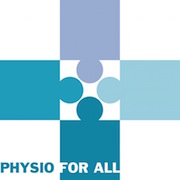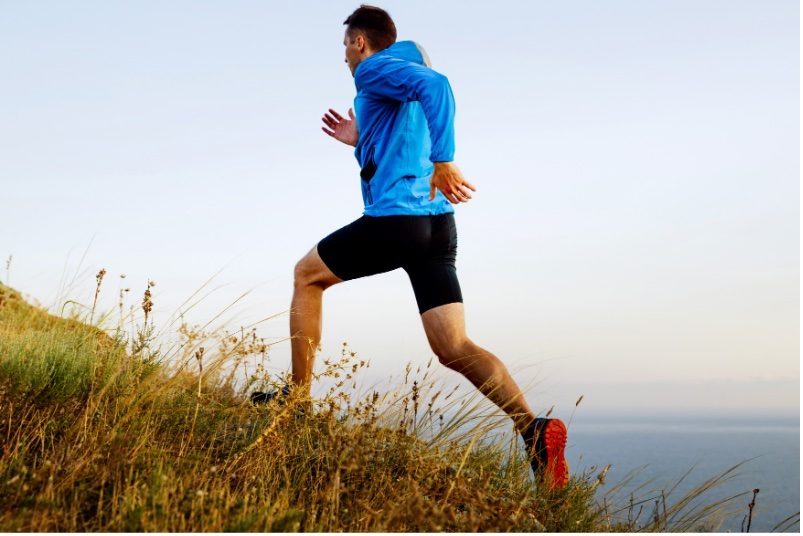Ilio-tibial band syndrome (ITBS). What is it and how can physiotherapy help you? ITBS is an overuse injury that represents the most common reason for lateral knee pain. It is most often seen in runners, cyclists and more generally in endurance athletes. It usually starts with a mild pain on the outside of the knee during or at the end of physical activity, with pain at rest or in normal activities in more irritable cases (e.g. stairs descending).
We appreciate it can be quite a frustrating condition, that you might have experienced for a while now. It might have put you off from training, competing or simply having a relaxing walk over the weekend. Whatever your ultimate goal is, we are here to help.
What is the ITB?
The iliotibial band is a strong and thick band that provides dynamic lateral stability to our knee and hip. From a biological perspective, it is made of a dense fibrous connective tissue that runs on the outside of our thigh from the iliac crest (that bone you can feel if you place your hands around your waist) to the lateral aspect of the knee.
We can think of the ITB as a robust structure, widely implicated in providing hip and knee stability during walking, running and hopping. Moreover, as many other structures in our MSK system, the ITB band is highly susceptible to mechanical load and can easily adapt to the load it is subjected.
If it’s such a robust structure, why does it hurt?
The emphasis placed on ITB robustness serves a purpose: regardless of what you might have read on the internet already, truth is the ITB cannot be stretched nor deformed. Therefore, it goes without saying that several techniques such as foam rolling and stretching do not represent adequate strategies for an ITB problem.
Recent evidence defines the ITB syndrome as a “compression” injury, where a highly innervated fat pad gets compressed between the ITB and the knee (see figure 1).

Fig. 1: lateral view of the knee that shows the connection of the ITB with a highly innervated fat pad, most likely responsible of the symptoms (from Brukner & Khan, “Clinical Sports Medicine” 5th edition)
As for the majority of running injuries, ITB syndrome is a “training error” injury, resulting from a spike in running volume, frequency, speed, or a sudden introduction of hill reps or trail running more in general.
As a general rule of thumb, our tendons do not like sudden changes in load, but they do need to be loaded in order to stay healthy!
This sort of contradiction implies two different things:
- You need to increase the amount of running in a progressive manner in order to steer away from any running injury
- You need to have a good “tissue capacity” in order to sustain high running loads
Your “tissue capacity” is the amount of stress that your tendons, ligaments and muscles can withstand: if this is exceeded as a result of doing “too much too quickly”, then you will experience pain.
Certain movement patterns in your running can also contribute to your pain, such as running with a narrow step width or with a higher amount of hip adduction. A thorough running video analysis can help to identify potential bio-mechanical factors contributing to injury.
But let’s not forget that pain is really complex: it is not only the result of a tissue injury, but also of several factors such as emotional distress and personal beliefs about the problem to name a few. That is why at Physio4All we always take a multidimensional approach, focusing on the whole person rather than the injury itself.

Fig.2: the relationship between contributing factors to an ITB injury (from PhysioNetwork.com, by Dr Rich Willy)
The main problem with ITB syndrome is that is can quickly become a persistent injury. If you have been experiencing pain for a while now during running, get in touch with us and we will be able to help.
How can I train my “tissue capacity”?
Strength training can dramatically increase your tissue capacity and should always be included in any running injury prevention program. Ideally, you should dedicate 2-3 sessions a week to train specific movements which are functional for running. Your physiotherapist can advice a bespoke prevention program tailored on your individual needs.
How can I modify my running gait?
An increase in running cadence has shown to positively affect running economy (i.e. the metabolic cost of running on your body), step width and hip adduction. However, a change in running cadence needs to be practiced thoroughly with a feedback component from a physiotherapist in order to be effective in the long-term.
In summary:
- ITB band syndrome is a result of a “training load error”
- The ITB is a strong and resilient connective tissue that cannot be stretched nor deformed, so no need to torture yourself with foam-rolling for this problem!
- Strength training is critical to both prevent and treat this condition
- A thorough running analysis can be helpful to spot particular movement patterns contributing to pain
At physio for All,our Sports and Muskuloskeletal physiotherapy team, can help you to manage the different stages of your IlioTibial band Syndrome recovery from the acute phase to sport retraining and back to your favourite sports with manual therapy and graded progression exercises.
You may benefit from a Running Video analysis.
Our Physiotherapists and Osteopaths are available for remote video consultations and Office or Home Visits. During the Covid-19 lock down period we are following strict health & safety guidelines to provide essential treatment at the Practice or Home Visits.
To book an appointment or chat to a Physiotherapist or Osteopath, please call 020 72282141 or battersea@physio4all.com or click here to book or for enquiry.








